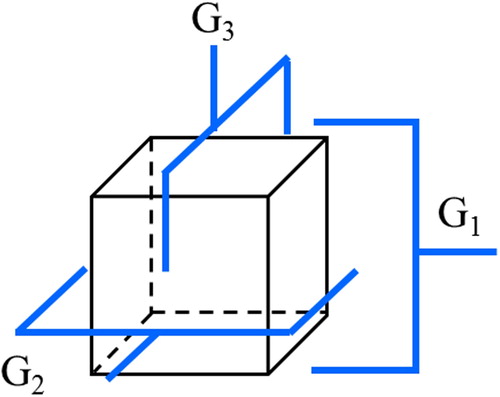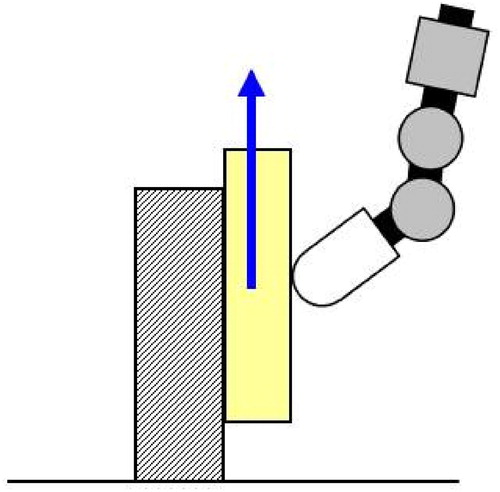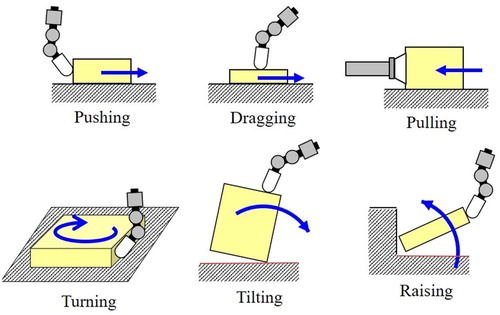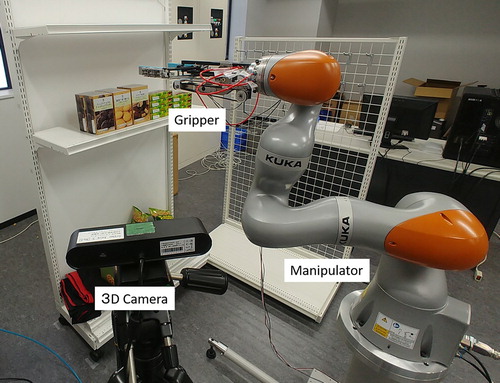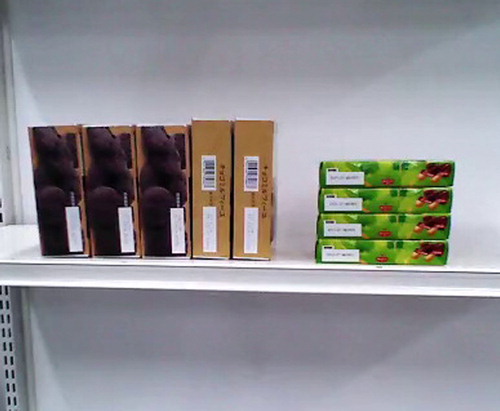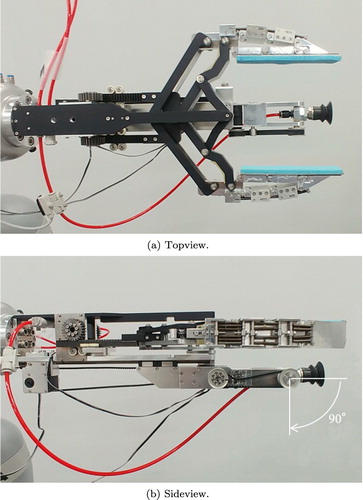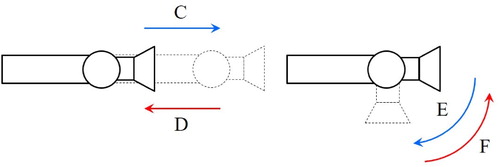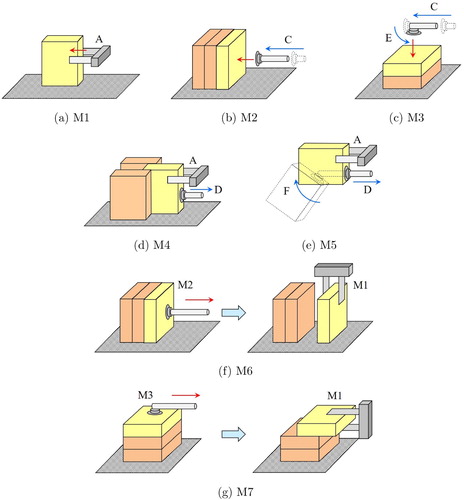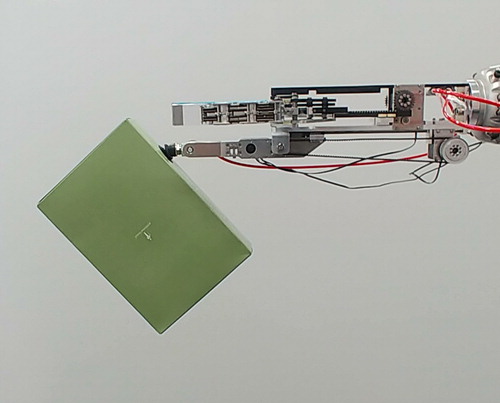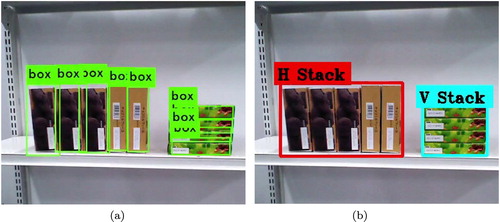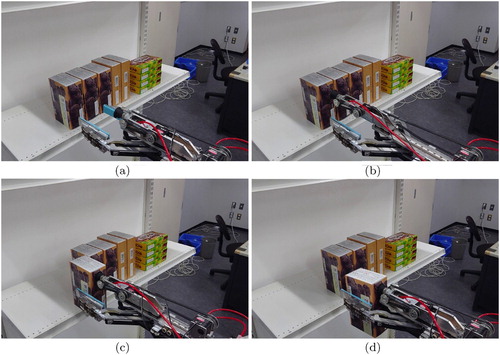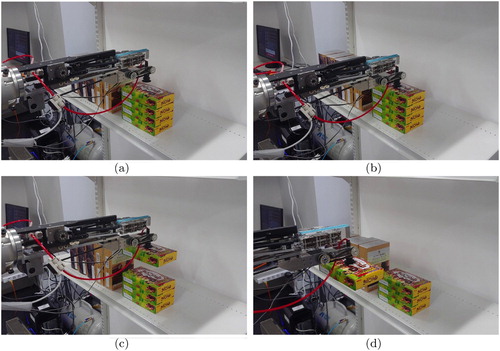Figures & data
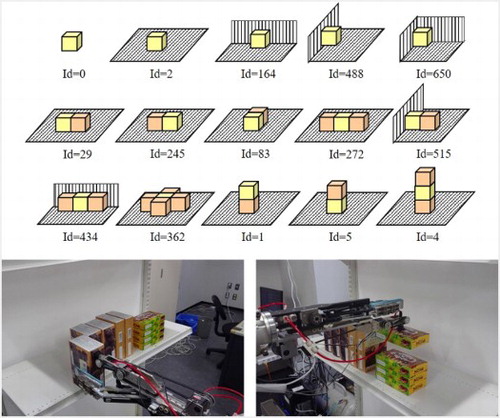
Figure 1. Non-prehensile manipulation may be performed for object picking according to the object arrangement pattern. (a) Tilting an aligned book for picking. (b) Sliding the top book for picking.
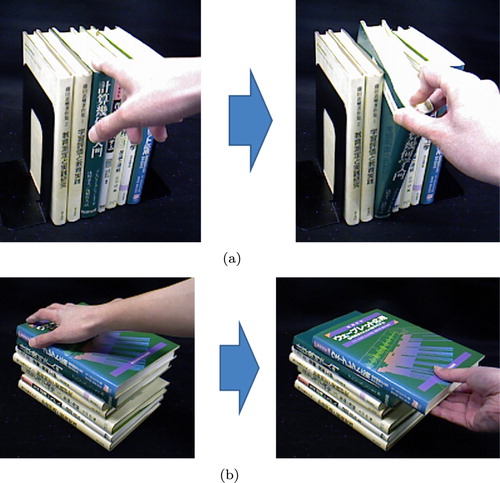
Figure 2. Two arrangement patterns of circular objects on a plane. (a) Arrangement pattern 1, (b) Arrangement pattern 2.
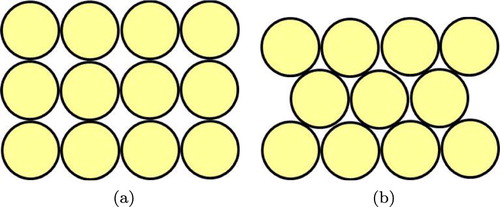
Figure 3. Labeling the faces of the object model. (a) The faces of the cuboid model and (b) the faces of the hexagonal prism model.
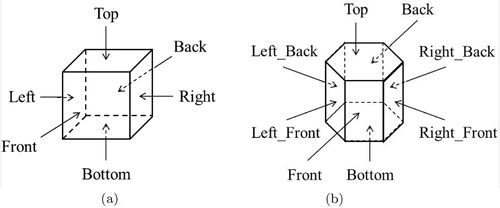
Figure 5. Representative object arrangement patterns of the cuboid model. The yellow cuboid is a target object, orange objects are moveable objects, and gray faces represent immovable objects.
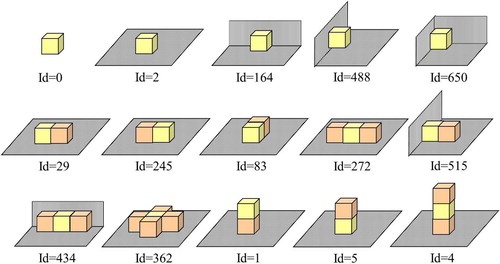
Figure 6. Object arrangement pattern in which part of the surfaces are occluded. (a) An object protruding from a desk and (b) middle object is the target object and is taller than the left and right objects, and the left object is taller than the right object.
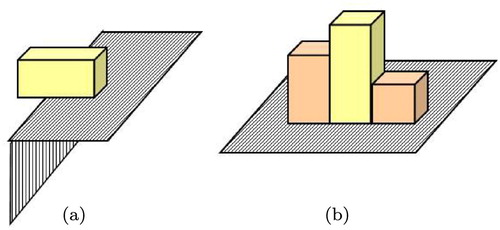
Figure 7. Three grasp patterns of a cuboid model when the object is grasped by a two-fingered gripper.
